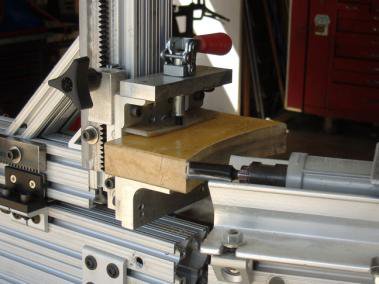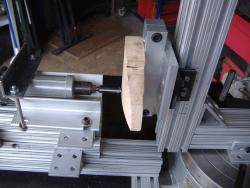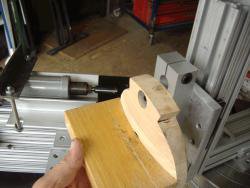- Joined
- Mar 25, 2013
- Messages
- 5,139
If I understand you correctly, you want to machine an arc in the 1.00 x .750 x 2,00 pad so that it matches the cylinder of the telescope body? I would do this on the bandsaw as suggested previously. A 5" radius arc should be very easy to cut. Clean it up with a drum sander, or sanding drum mounted in the drill press.
Illinoyance idea would work but would require a large expensive plate with a lot of waste. I assume you already have the stock? A similar idea on a larger lathe would be to fix each 2" piece onto the perimeter of a face plate and make the inside cut that way. Given the dimensions of the part you would need a lathe with a swing of about 12+".
Robert
Illinoyance idea would work but would require a large expensive plate with a lot of waste. I assume you already have the stock? A similar idea on a larger lathe would be to fix each 2" piece onto the perimeter of a face plate and make the inside cut that way. Given the dimensions of the part you would need a lathe with a swing of about 12+".
Robert



